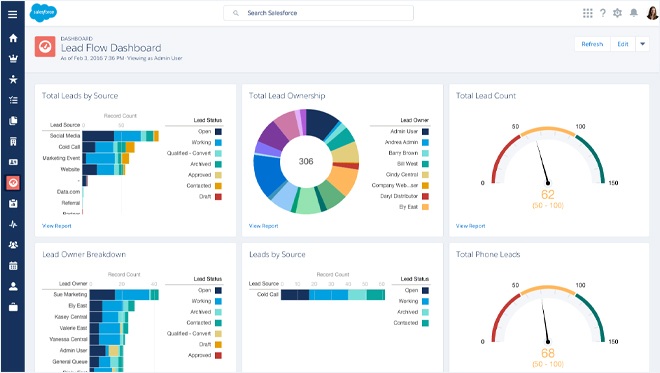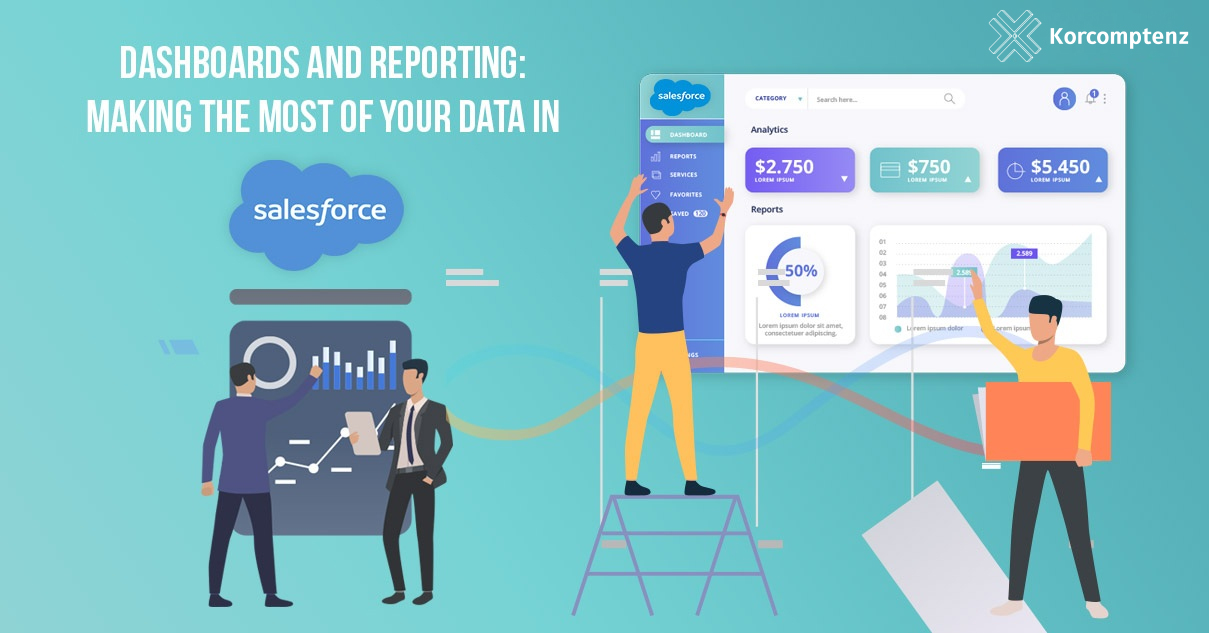
How Salesforce Leverages AI to Drive Business Growth
Learn how Salesforce leverages AI to drive business growth, enhance customer experiences, and improve decision-making with powerful insights and automation.

#DrivingExpertLedTransformation
The first and most important step is to understand the key components of Salesforce dashboards. Salesforce offers both reports and dashboards. The reports are a great way to do a deep dive into your your sales, service, and marketing data sets while the dashboards allow you to view quick visualizes of up to 20 key items at once. The goal is to get a snapshot of your performance, identify positive trends, or areas for improvement at a single glance.
Most companies use these dashboards to report on some combination of financial and productivity data:

The first step for creating Salesforce dashboards is to create your custom reports or choose an existing one to edit. From there, you have the ability to choose from charts, tables, and metrics. The charts feature a wide variety of visualization including funnels, donuts, bar graphs, and more to make the most of your data. The metrics let you choose from sales and opportunity data, financial data in Salesforce, activity data, or for Service Cloud user case and other data.
The creation and management of these dashboards is another feature that has been greatly improved in Salesforce’s new Lightning Experience interface. It features drag and drop capabilities and other tools to make it much easier to identify the metric and choose the visualization. Lightning also supports interactive dashboards, allowing you to filter and segment data in real time.

Salesforce also allows you to share your dashboards using different channels. This can be an extremely useful feature in case you are working with a global team or other remote resources. You have the choice of sharing dashboards via emails, web links, presentations, and PDFs. Therefore, the dashboards can be accessed from anywhere, helping your team keep track of their performance on the go. Another important feature is that these dashboards update automatically, thereby ensuring that you do not miss out on important sales updates.

Please contact us to learn more. We specialize in helping customers visualize their data on Salesforce, providing turnkey consulting, implementation, and support services.

Learn how Salesforce leverages AI to drive business growth, enhance customer experiences, and improve decision-making with powerful insights and automation.

The value of data cannot be overstated in today’s world. Accurate data sets can be used to devise strategies, execute plans, track business performance, and make process improvements.

In today’s highly competitive business environment, every company is looking to stay ahead of the competition. Technology is emerging as a key enabler to help organizations achieve their goals.
| Cookie | Duration | Description |
|---|---|---|
| cookielawinfo-checkbox-analytics | 11 months | This cookie is set by GDPR Cookie Consent plugin. The cookie is used to store the user consent for the cookies in the category "Analytics". |
| cookielawinfo-checkbox-functional | 11 months | The cookie is set by GDPR cookie consent to record the user consent for the cookies in the category "Functional". |
| cookielawinfo-checkbox-necessary | 11 months | This cookie is set by GDPR Cookie Consent plugin. The cookies is used to store the user consent for the cookies in the category "Necessary". |
| cookielawinfo-checkbox-others | 11 months | This cookie is set by GDPR Cookie Consent plugin. The cookie is used to store the user consent for the cookies in the category "Other. |
| cookielawinfo-checkbox-performance | 11 months | This cookie is set by GDPR Cookie Consent plugin. The cookie is used to store the user consent for the cookies in the category "Performance". |
| viewed_cookie_policy | 11 months | The cookie is set by the GDPR Cookie Consent plugin and is used to store whether or not user has consented to the use of cookies. It does not store any personal data. |